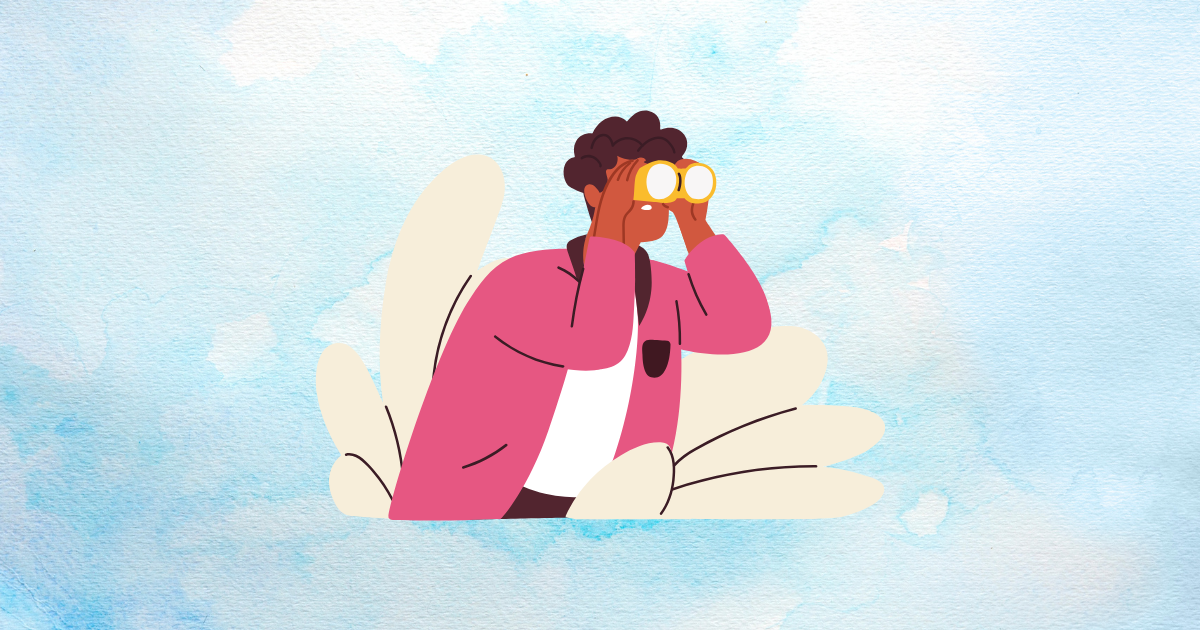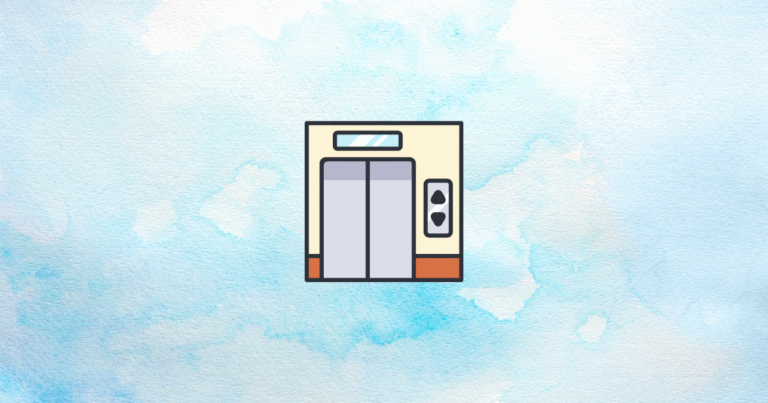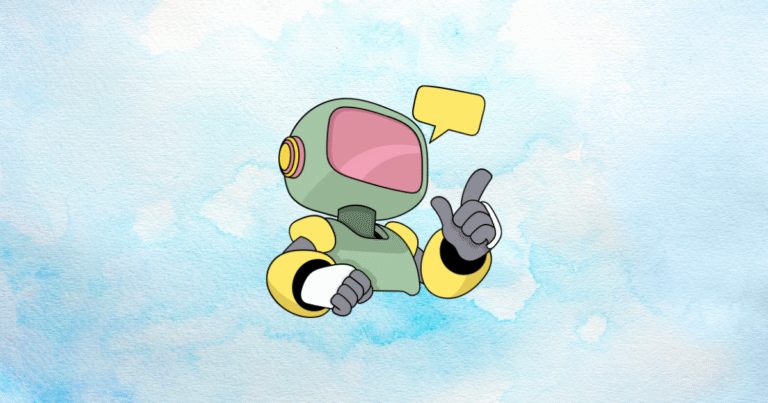Have you ever felt that nagging itch to click on something just because you needed to know more? That feeling is no accident—it’s the power of curiosity at work! In this article, you’ll discover how to use curiosity gaps to spark that burning desire for answers and boost click-through rates. By the time you finish reading, you’ll learn the psychology behind curiosity, the building blocks of a curiosity gap, and how to apply these strategies across various marketing channels. Ready to dive in and uncover the secrets? Let’s get started!
Introduction to Curiosity Gaps
What to Expect in This Section: You’ll learn what a curiosity gap is, why it creates that irresistible pull to find out “just a bit more,” and how businesses leverage it to stand out in today’s crowded digital space.
Definition and Concept
A curiosity gap is that space between what people already know and what they want or need to know. It’s a psychological spark that drives us to take action, whether it’s clicking a link, opening an email, or reading further. We can trace this idea back to the concept that humans feel a strong urge to resolve uncertainty. When something is teased but not fully revealed, we get an almost itchy feeling to uncover the full story.
This method stands apart from other engagement tactics because it doesn’t rely on flashy gimmicks or empty promises. Instead, it relies on the very human need to know more.
The Business Case for Curiosity Gaps
Businesses see dramatic results from using well-crafted curiosity gaps. In some cases, reports show over 900% increases in click-through rates when curiosity is skillfully applied—imagine a pricing page that suddenly becomes irresistible to visitors because you’ve hinted at a surprise discount or exclusive deal! These spikes in clicks often lead to better engagement metrics, higher conversion rates, and stronger ROI. By successfully tapping into curiosity, companies gain a competitive edge, especially in today’s “attention economy” where every click counts.
Overview of Article Objectives
This article aims to give you a clear framework for creating curiosity gaps effectively. You’ll find practical strategies for email marketing, social media, content marketing, and paid advertising. We’ll also explore testing methods to refine your approach and discuss ethical boundaries so your curiosity-driven tactics build trust rather than erode it.
Curious about the science behind it all? Keep reading to explore the fascinating psychology that fuels curiosity!
The Psychology Behind Curiosity Gaps
What to Expect in This Section: We’ll look at how our brains react to missing information, why humans constantly crave answers, and how balancing how much we reveal shapes engagement.
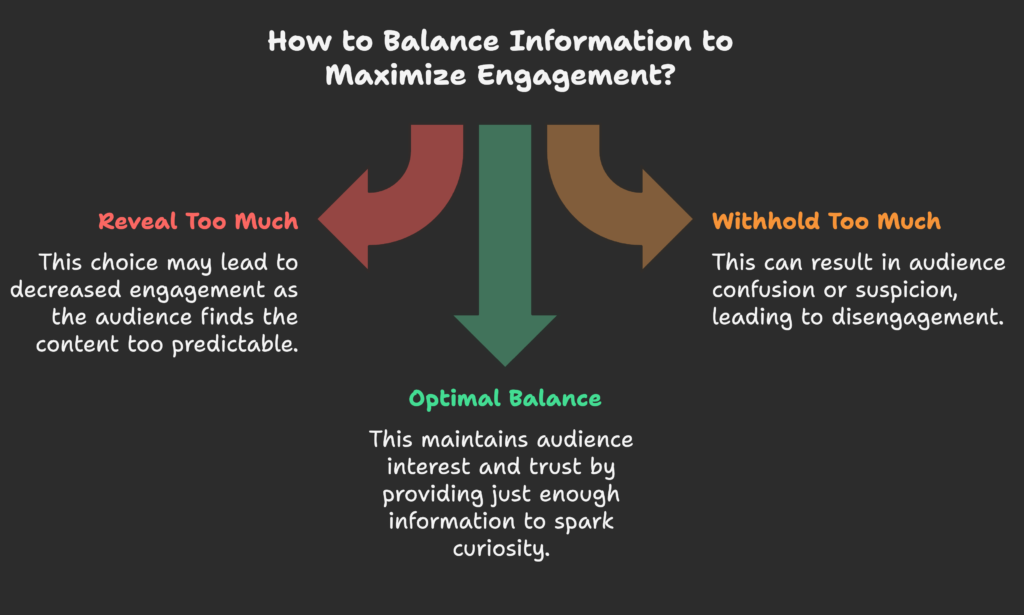
Cognitive Foundations of Curiosity
George Loewenstein’s information gap theory tells us that whenever we sense a gap between what we know and what we want to know, we feel driven to close that gap. This drive can be compared to cognitive dissonance, where our minds become restless if we sense any inconsistency or missing piece of information. Neurological research even shows dopamine release when we’re seeking answers—an internal reward that keeps us clicking and reading.
Why Humans Are Driven by Curiosity
From an evolutionary angle, curiosity helped early humans explore and discover resources, fostering survival. Today, that same trait pushes us to open emails with intriguing subject lines or click headlines that suggest “something you’re missing.” Our bodies literally treat the act of learning like a reward, releasing dopamine to signal that we’re doing something beneficial. Of course, people vary in how strongly they respond to curiosity triggers, but the desire to uncover new information is universal.
The Optimal Information Balance
One tricky part of creating a curiosity gap is knowing how much to tease. Give away too much and engagement fizzles—why click if the answer is already obvious? Withhold too much, and you may leave your audience confused or suspicious. Research suggests a sweet spot: provide enough details to spark interest but not enough to fully satisfy it. For example, a headline like “7 Surprising Ways to Cut Home Energy Costs” is specific enough to create trust but still leaves enough mystery to pique interest.
Ready to see how this translates into real marketing tactics? Let’s explore the anatomy of an effective curiosity gap next!
Anatomy of an Effective Curiosity Gap
What to Expect in This Section: Discover the core elements that form a successful curiosity gap, the emotional triggers that heighten intrigue, and the structural techniques that keep audiences hooked until the final reveal.
The Three Essential Components
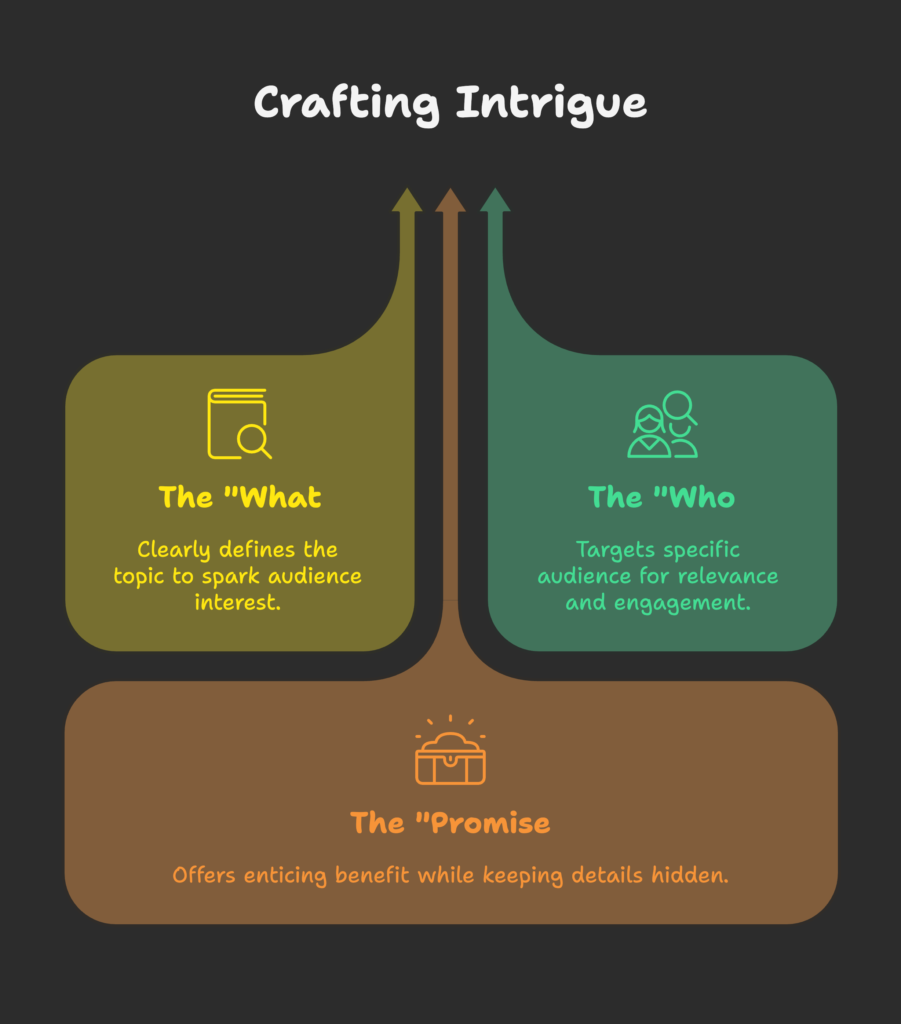
Effective curiosity gaps usually include three parts:
- The “what”: Clearly identify the topic so the audience knows the general subject.
- The “who”: Show that it’s relevant to the people you want to reach (your target audience).
- The “promise”: Present an enticing benefit without giving away all the answers.
For instance, “How busy freelancers can double their monthly income with a simple change (and why only a few know about it).” It reveals the topic (freelancers and income), targets a group (busy professionals), and promises a benefit (doubling income) but teases a “simple change” without stating it outright.
Emotional Triggers That Enhance Curiosity
Humans tend to be driven by strong emotions such as joy, anger, fear, disgust, shock, and sadness. By weaving these into your message—perhaps hinting at a shocking statistic or a fear of missing out (FOMO)—you add an emotional charge that encourages further reading. Suspense and anticipation are powerful tools to keep people on the edge, wanting to see that resolution at the end of the story.
Structural Elements for Maximum Impact
You can create a solid hook by grabbing attention in the opening line, then strategically withholding critical information until a later point. Timing is key: if you reveal too early, curiosity fizzles; wait too long, and people lose interest. Maintaining a sense of tension while also promising satisfaction is what truly separates a boring headline from one that practically commands a click.
Excited to apply these elements in the real world? Next, we’ll look at how to use curiosity across different marketing channels!
Crafting Curiosity Gaps Across Marketing Channels
What to Expect in This Section: Learn how to tailor curiosity-driven strategies for email, social media, content marketing, and paid ads. Each channel has unique quirks that can amplify—or diminish—your message.
Email Marketing Applications
Subject lines are your golden ticket to an open. Phrases like “You won’t believe what’s hidden in our new offer…” or “The one secret your competitors hope you never learn” invite clicks. Then, follow through with preview text that adds just enough detail to heighten curiosity. Inside the email, sprinkle small revelations through the body while hinting at the main solution or reveal, which should align with your call to action. Position your CTA after you’ve built enough curiosity so people feel compelled to click for the final answer.
Social Media Implementations
Different platforms demand different approaches. On Twitter, for example, you’re forced to be concise, so you might say, “We just found the most unexpected hack for holiday sales. Can you guess what it is?” LinkedIn might allow a short teaser paragraph, while Facebook and Instagram can rely on visual hooks—images or short videos that raise questions without giving the answer right away. Timing is also crucial; post when your audience is active to maximize the curiosity surge.
Content Marketing Strategies
When writing blog posts, your title and meta description should pique interest. Something like “3 Little-Known Tactics That Can Transform Your Email List Overnight” gets readers to click through. Once they start reading, maintain momentum with section headers that open more loops. By the time the reader reaches the conclusion, they should feel satisfied that each loop was closed—but never bored.
Paid Advertising Approaches
In paid ads, headlines often act as your only chance to capture attention. Use a curiosity-driven opening, then align the landing page headline and content with that promise. If your ad mentions a “surprising method to cut costs,” the landing page should continue that story. Consistency across the ad and page builds trust and further encourages conversions. Video ads can also benefit from curiosity: begin with an intriguing, unresolved statement or question, then slowly reveal key points.
Ready for hands-on tactics you can use right away? Let’s look at practical formulas and templates!
Practical Formulas and Templates
What to Expect in This Section: You’ll get concrete headline ideas, email subject line suggestions, and social media copy patterns that you can adapt for your own marketing campaigns.
Headline Frameworks That Create Curiosity
- Question-based formulas: “Are You Missing This Simple Trick That Could Boost Your Sales?”
- “How-to” with an omission: “How to Improve Your SEO by [Unexpected Approach]”
- Numbered list intrigue: “5 Surprising Reasons Customers Abandon Carts (and One Is So Obvious It Hurts)”
- Counterintuitive statements: “Why Lowering Prices Doesn’t Always Increase Sales”
Email Subject Line Patterns
- Personal story hook: “I made this one change and tripled my leads—here’s how.”
- Problem-solution tease: “Struggling with slow sales? This fix will surprise you.”
- Unexpected statement: “Selling less can actually make you more money—wait, what?”
- Time-sensitive gap: “You have 12 hours to see the reveal—don’t peek unless you’re ready!”
Social Media Copy Templates
- Twitter: “You’ll never guess what I discovered about [topic]—details in the link!”
- Instagram: “Swipe left to uncover a secret that changed my [health/finance/marketing/etc.] game.”
- LinkedIn: “Ever wonder why [X strategy] fails for so many professionals? Let’s dissect the real reason.”
- Facebook: “There’s one surprising tool we use to cut our costs by half. Here’s a sneak peek…”
Content Introduction Structures
- Story-based opening: Begin with a short anecdote hinting at a dramatic outcome.
- Statistical hook: Reveal a striking number but hold back the “how” or “why.”
- Problem identification: Paint a scenario of a common issue without instantly offering the solution.
- Suspended outcome: Start describing an event but pause at the climax, inviting readers to continue.
Wondering about a complete system to keep curiosity going? Next, we’ll introduce the ‘Storybox Formula’ for even deeper engagement!
The “Storybox Formula” for Sustained Curiosity
What to Expect in This Section: Learn a four-step approach (showing what people want, challenging their solutions, hinting at outcomes, and reinforcing results) that keeps your audience hooked from start to finish.
Showing What the Audience Wants
Begin by painting a clear picture of an outcome your audience desires—maybe it’s higher sales, a better lifestyle, or a new skill. Use relatable language so people can see themselves enjoying that future. Even a simple statement like “Imagine doubling your store’s revenue without doubling your workload” can spark that “I want this!” feeling.
Challenging Existing Solutions
Next, highlight why current methods might be falling short. Point out overlooked flaws or reasons people aren’t seeing the results they expect. This creates a gap between the desired outcome and the reality they’re stuck in, naturally boosting curiosity about how to bridge that gap.
Revealing Potential Outcomes
Sprinkle in clues about the dramatic transformation that’s possible, such as “Some entrepreneurs have improved conversions by 300% using just one tweak!” or “A handful of online stores are quietly outpacing larger competitors—here’s a clue about what they do differently.” Notice you don’t give all the details yet, keeping the curiosity fire burning.
Reinforcing Results
Finally, bolster your promise with hints of proof. Mention real user testimonials or relevant data, but leave the full story for those who dive deeper. People feel more confident when they sense there’s solid evidence, and they’ll be keen to see it if you’ve only teased them with a peek.
Eager to test these tactics in real campaigns? Let’s explore methods for measuring and optimizing your curiosity strategies next!
Testing and Optimizing Curiosity Gap Effectiveness
What to Expect in This Section: Find out how to run A/B tests, identify the key metrics that show whether your curiosity gap strategy is working, and refine your approach for continuous improvement.
A/B Testing Methodologies
Basic split testing is a simple yet powerful way to gauge what resonates. You might try two different headlines, one with a subtle tease and one with a more direct approach. Look for higher click-through rates, engagement, and follow-through metrics. Then continue refining. In emails, test subject lines or preview text. On landing pages, experiment with different curiosity-driven messages in your hero section.
Key Performance Indicators
Click-through rate (CTR) is often the immediate measure for curiosity-driven content. However, you should also track time on page, bounce rates, and conversion rates. Did readers stay long enough to see the “big reveal”? Did curiosity translate into actual actions—like sign-ups or sales? Observing your audience’s behavior from first click to final conversion helps you decide if your curiosity gap is useful or just a temporary distraction.
Optimization Frameworks
Curiosity marketing works best with an iterative approach. Segment your audience to see which group responds most to certain styles of curiosity triggers. Personalize your messaging if you can. Then, keep testing: tweak your headlines, adjust your withheld information, and refine your calls to action. Over time, you’ll develop a sharper sense of how to tease without frustrating your audience.
But wait—how do you ensure your curiosity strategy remains ethical and doesn’t turn into clickbait? Let’s tackle that next!
Ethical Considerations and Best Practices
What to Expect in This Section: Learn the difference between genuine curiosity marketing and deceptive clickbait, the pitfalls to avoid, and how to build long-lasting trust with your audience.
Differentiating Curiosity Marketing from Clickbait
Clickbait often involves misleading or exaggerated headlines that fail to deliver. Ethical curiosity marketing, however, gives people exactly what’s promised, maintaining authenticity and respect. If you say, “Discover a new way to attract clients,” you must provide valuable insight instead of vague or recycled information.
Avoiding Common Pitfalls
- Over-withholding details: Don’t hide so much that your audience is left clueless or annoyed.
- False promises: Don’t promise “massive secrets” if all you have is basic tips.
- Overextension: Stretching the suspense too long can kill the excitement.
- Misalignment: Make sure your final content actually matches your teasing headline.
Building Long-term Engagement Through Ethical Curiosity
When you deliver on what you promise, readers start trusting your brand. This trust extends beyond one click—it becomes a relationship. By consistently providing value, you transform curiosity gaps into loyal engagement. Over time, your brand identity becomes associated with genuine insights rather than sensational headlines.
Ready to see how these tactics play out in real campaigns? Up next are some examples and success stories!
Case Studies and Real-World Examples
What to Expect in This Section: Discover actual campaigns and results from email, content, and social media marketing where curiosity gaps drove engagement and conversions.
Email Marketing Success Stories
Some brands have seen open rates soar by teasing a singular mystery. For example, an email might read, “Your quick fix to reduce cart abandonment—find out in 2 minutes.” By focusing on a single secret and revealing it in the email body, they keep the promise clear and the path to discovery simple. Results often show a jump in click-through and conversion because the content and CTA are closely aligned with that teased solution.
Content Marketing Transformations
Blog posts with curiosity-based titles such as “The Hidden Reason Your Ad Campaigns Are Failing (It’s Not Your Budget)” have driven impressive growth in traffic. Readers click to see what they’re missing, and if the post follows through—maybe by highlighting a less-discussed factor like audience segmentation—it leaves visitors feeling they’ve learned something genuinely new.
Social Media Engagement Examples
Platforms like LinkedIn have featured case studies where a simple post like “I almost doubled my conversion rate with one unexpected change… Guess what it was?” generated lively discussions. The key is that the poster eventually revealed the “unexpected change” in a follow-up comment or article, maintaining trust and curiosity at the same time.
Do you want to integrate these lessons into your organization’s strategy? Let’s explore a step-by-step implementation framework next!
Implementation Framework
What to Expect in This Section: Learn how to audit your current marketing for curiosity gaps, plan an effective rollout, and ensure your whole team supports the approach.
Curiosity Audit Process
Start by reviewing your existing marketing materials—email subject lines, blog headlines, social media posts, and landing pages. Look for missed opportunities where a small tweak might add an element of mystery. Make a list of where you think curiosity could have the most impact, such as critical product pages or high-traffic blog posts.
Strategic Implementation Plan
Next, decide on a rollout plan. Maybe begin with your email campaigns, then expand to social media and your homepage. Allocate resources, such as copywriters, designers, or video editors, who can bring these curiosity elements to life. Create a timeline that includes testing phases, data analysis periods, and refinement steps so you can iterate without wasting time or money.
Training and Team Alignment
Finally, educate your marketing and content teams about how ethical curiosity works. Set guidelines to prevent any misleading tactics. Encourage cross-functional collaboration—designers can contribute visuals that tease the eye, while writers can craft compelling narratives. Share the results and celebrate wins to reinforce the positive impact of curiosity-driven marketing.
Ready for the final wrap-up? Let’s head to our concluding thoughts and future perspectives!
Conclusion and Future Directions
What to Expect in This Section: Let’s summarize the critical lessons, look at trends that could shape curiosity marketing, and close with thoughts on how curiosity can become your secret ingredient for sustained success.
Key Takeaways
Curiosity gaps work because they tap into an innate human desire for answers. They can dramatically boost click-through rates and keep audiences engaged if used ethically and delivered with real value. The sweet spot lies in revealing just enough information to intrigue but not enough to satisfy, followed by a meaningful conclusion.
Emerging Trends in Curiosity Marketing
- AI and personalization: Tools that tailor curiosity gaps to individual preferences and behaviors.
- Cross-channel synergy: Coordinating curiosity hooks across email, social media, and even voice search for a unified experience.
- Mobile and voice search: Capturing attention in increasingly on-the-go environments demands concise, punchy curiosity tactics.
- Consumer sophistication: Audiences get savvier, so authenticity and genuine insight grow more vital.
Final Thoughts on the Strategic Advantage of Curiosity
When you consistently deliver interesting information, solve real problems, and maintain a sense of wonder, you create more than just click-throughs—you build a relationship. Curiosity is powerful and timeless, bridging the gap between attention and action. Balance the art of withholding information with the science of measurable results, and you’ll find that curiosity becomes one of your most impactful marketing strategies.
References
- Copyhackers. (2023, October 7). Should You Use a Curiosity Gap to Persuade Your Visitors to Click? https://copyhackers.com/2014/04/curiosity-gap/
- Nature. (2025, January 6). When curiosity gaps backfire: effects of headline concreteness on clickthrough rates. https://www.nature.com/articles/s41598-024-81575-9
- Jatinder Palaha. (2022, April 5). How to Use Curiosity Marketing To Get More Clicks. https://www.jatinderpalaha.com/curiosity-marketing/
- Enchanting Marketing. (2022, May 21). The Curiosity Gap: Can You Entice More People to Click and Read? https://www.enchantingmarketing.com/curiosity-gap/
- Emily Aborn. (2023, August 17). Using the Curiosity Gap to Make Them Want MORE! https://emilyaborn.com/curiosity-gap/
- Case Study Buddy. (2022, July 28). How to Drive Curiosity—and Conversions—With Your Customer Case Study. https://casestudybuddy.com/blog/how-to-drive-curiosity-and-conversions-with-your-customer-case-study/
- LinkedIn. (2022, February 24). The Curiosity Gap: What is it, and how can we use it in marketing? https://www.linkedin.com/pulse/curiosity-gap-what-how-can-we-use-marketing-gerard-doyle
- Websites in WP. (2022, April 24). What Is The Curiosity Gap? (How to Use It For Better Email Subjects). https://websitesinwp.com/curiosity-gap/
- WordStream. (2017, April 10). 6 Ways to Use the Curiosity Gap in Your Marketing Campaigns. https://www.wordstream.com/blog/ws/2017/04/10/curiosity-gap
- CoSchedule. (2025, January 16). How to Use Curiosity Gaps to Create Tension and Keep Customer’s Attention. https://coschedule.com/blog/how-to-use-curiosity-gaps-to-create-tension-and-keep-customers-attention-for-as-long-as-you-want-with-andrew-davis-amp-169
- eAskme. (2017, November 13). Use the Curiosity Gap in Your Marketing Campaigns. https://www.easkme.com/2017/11/curiosity-gap-marketing-campaigns.html
- Content Marketing Institute. (2021, July 26). Curiosity May Have Killed the Cat But It Could Save Your Content. https://contentmarketinginstitute.com/articles/curiosity-gap-clickbait-content/
- CoSchedule. (2024, October 2). How to Use Curiosity Gaps to Write Headlines People Must Click. https://coschedule.com/headlines/curiosity-gaps
- Revnew. (2025, January 16). What Is Curiosity Marketing to Engage More Audiences? https://revnew.com/blog/curiosity-marketing-to-engage-more-audiences
And here’s a small reminder for Shopify store owners: Don’t forget that you can supercharge your sales by using the Growth Suite app. It’s designed to help Shopify businesses optimize their marketing efforts, streamline operations, and ultimately see higher conversions.

